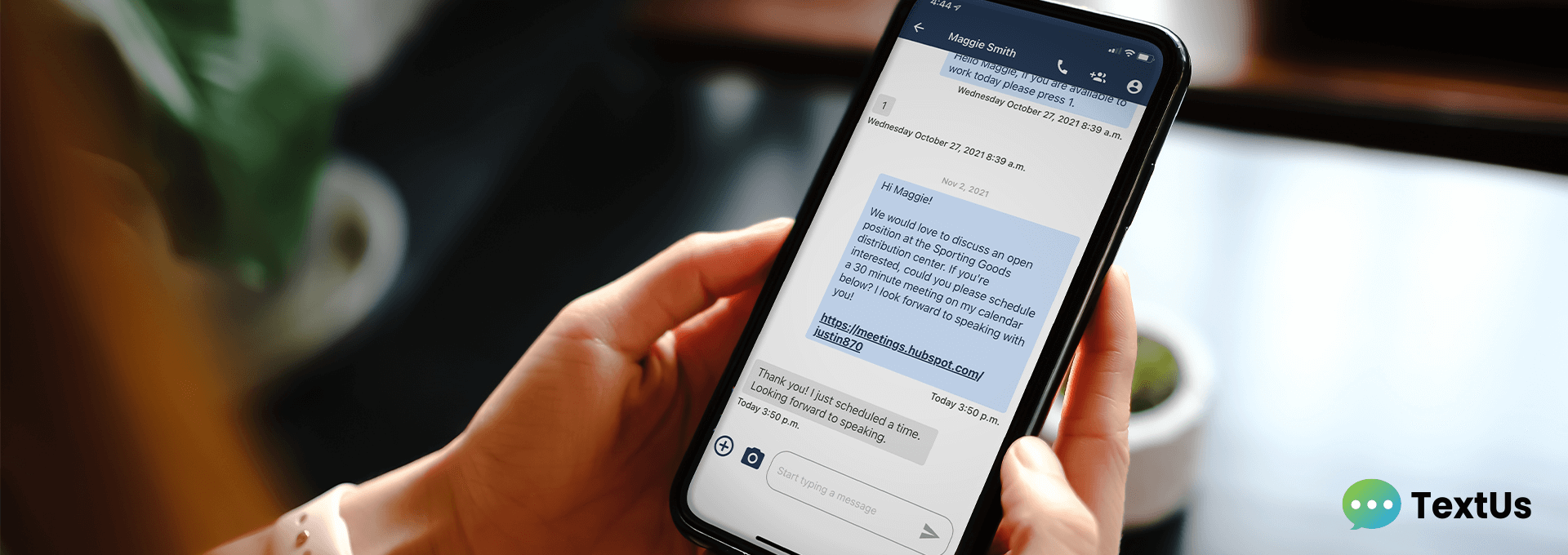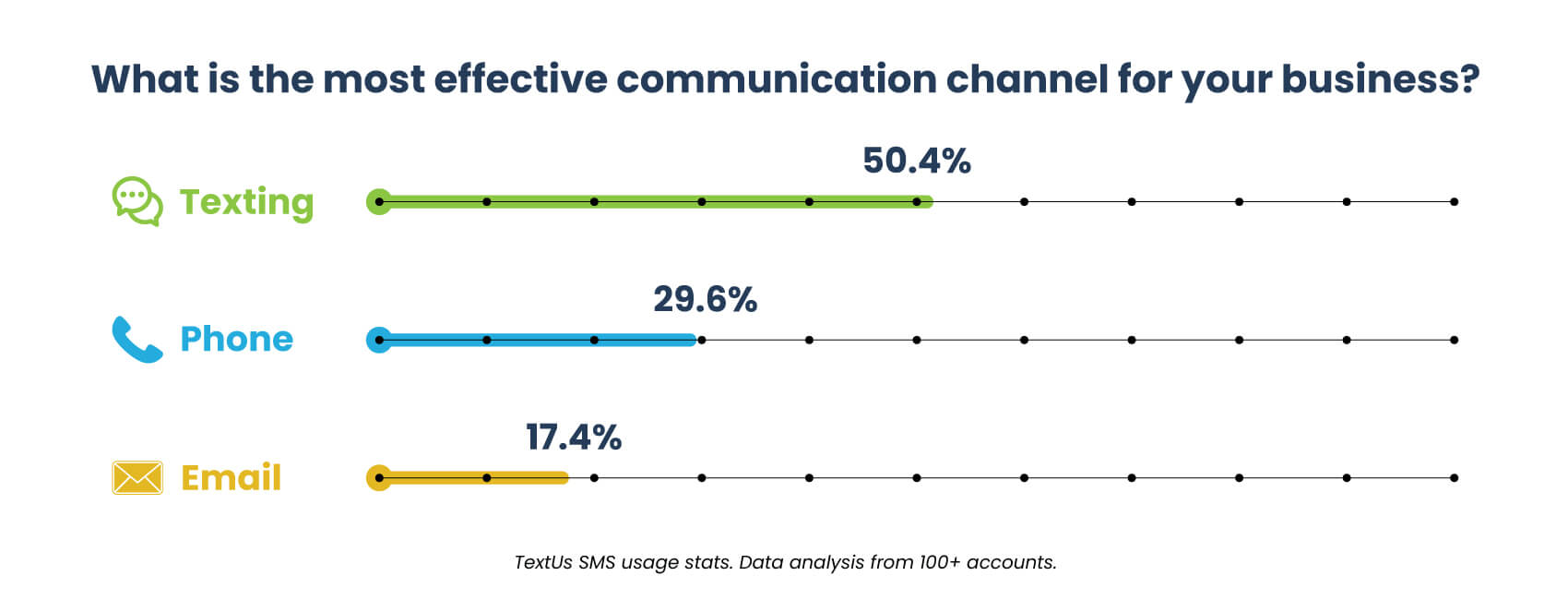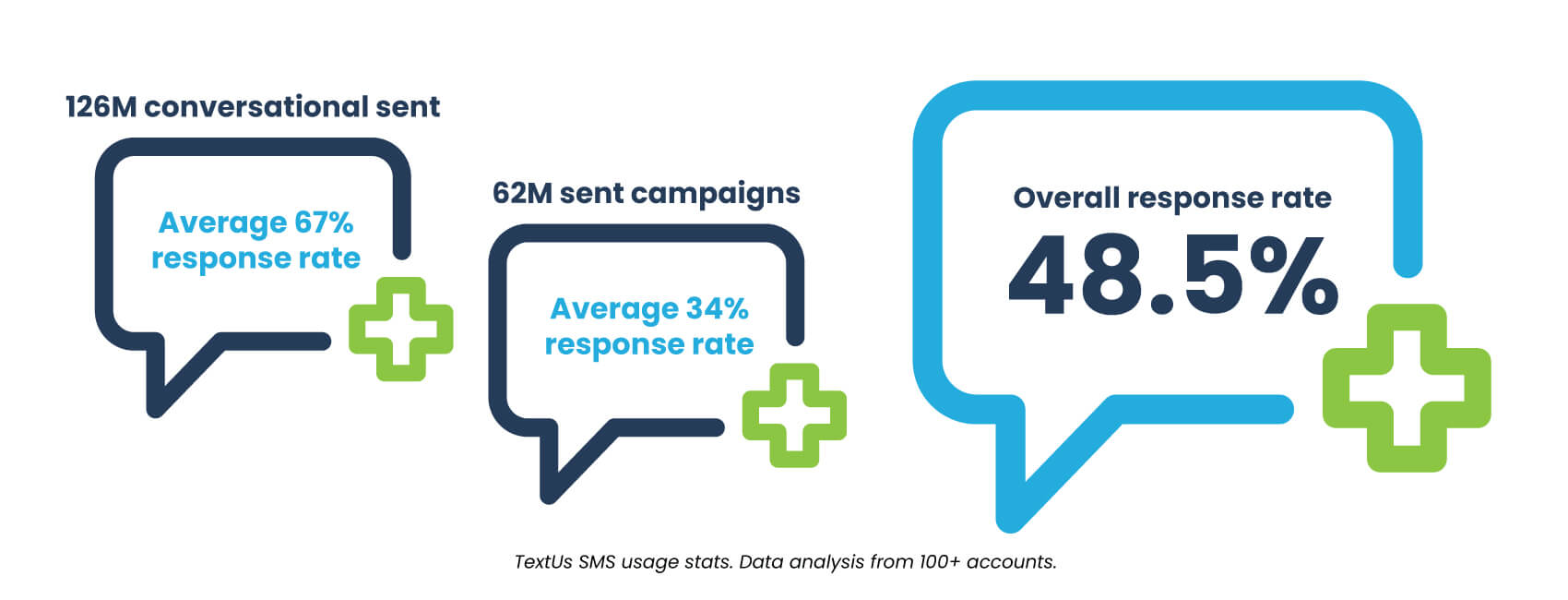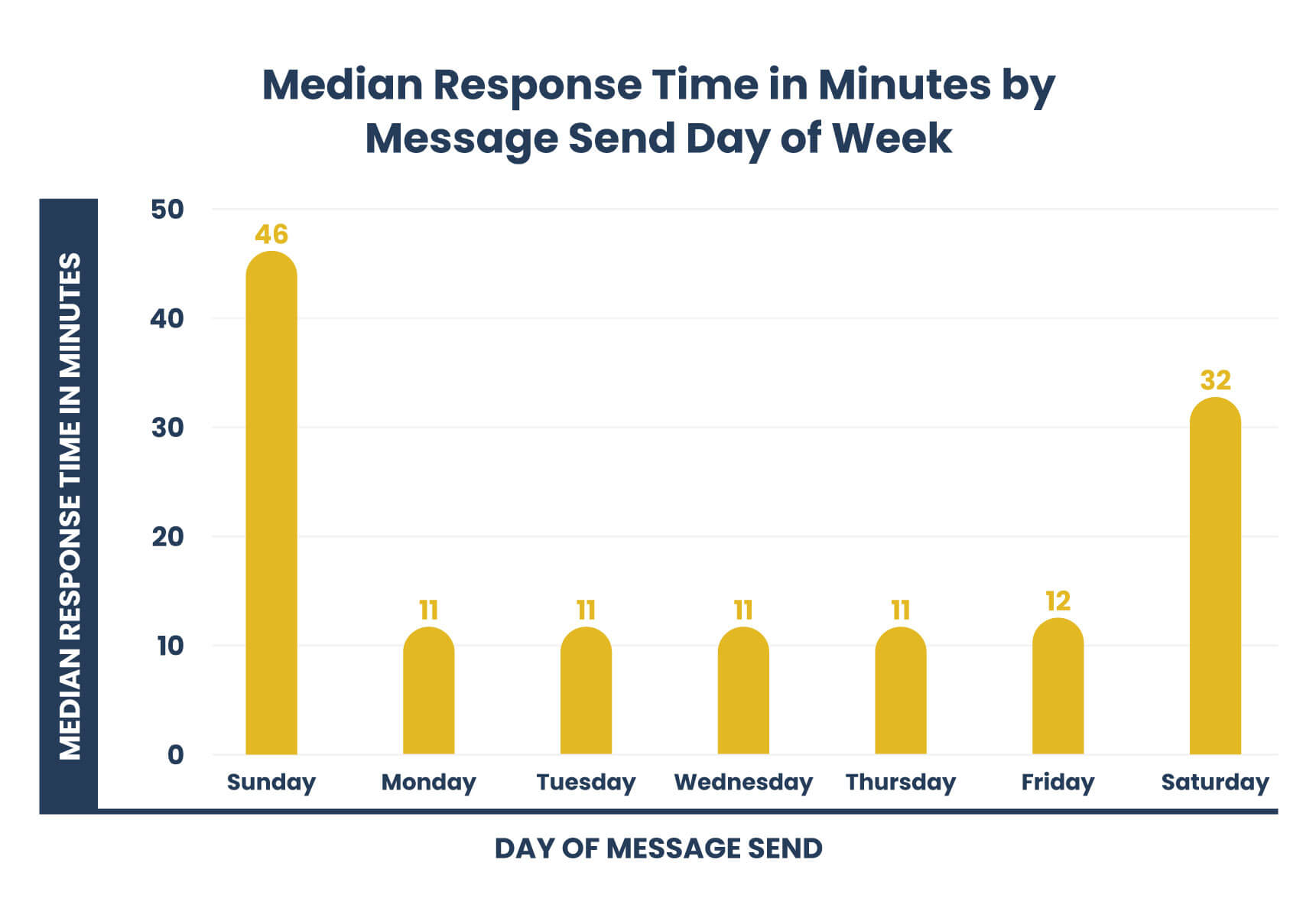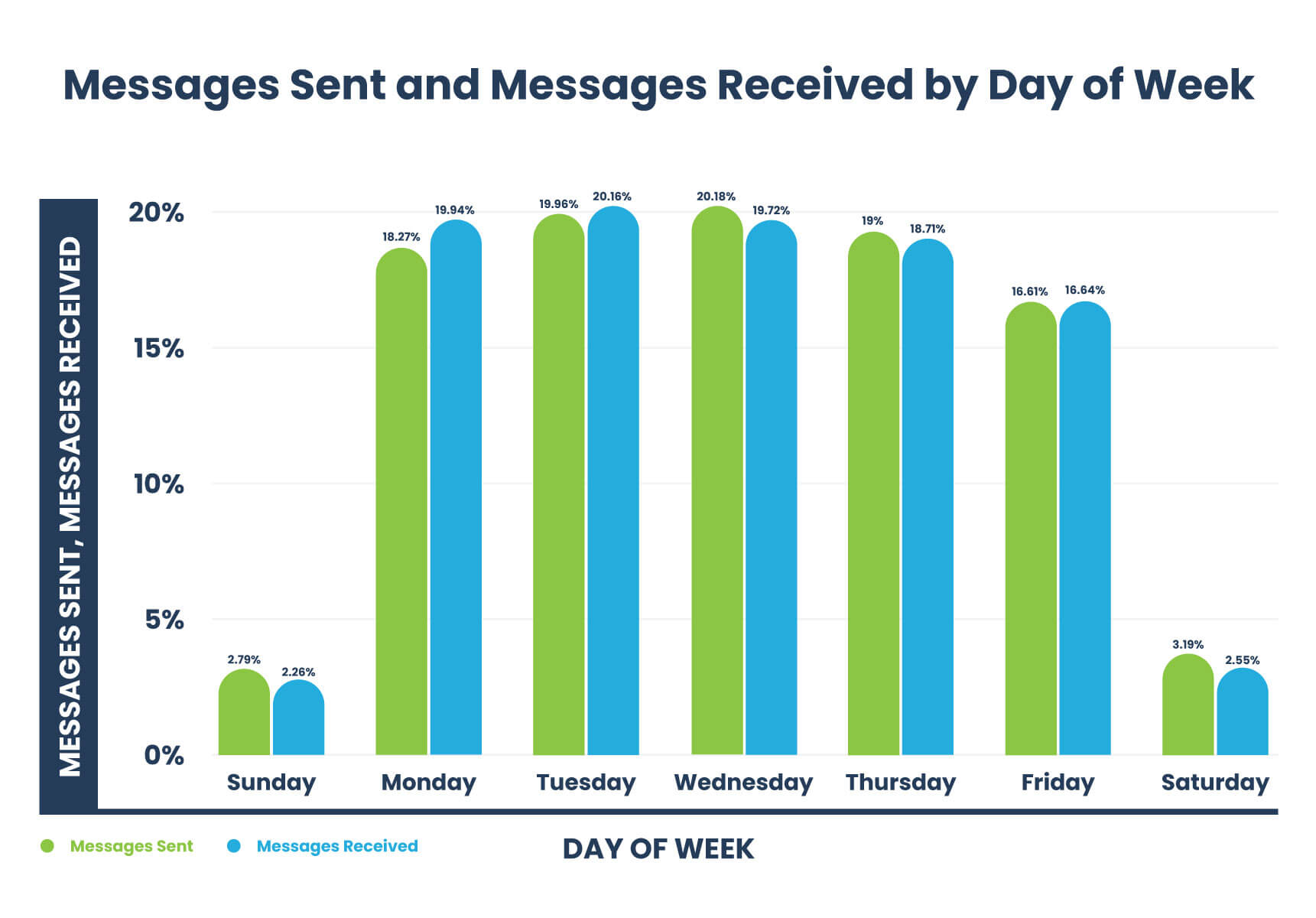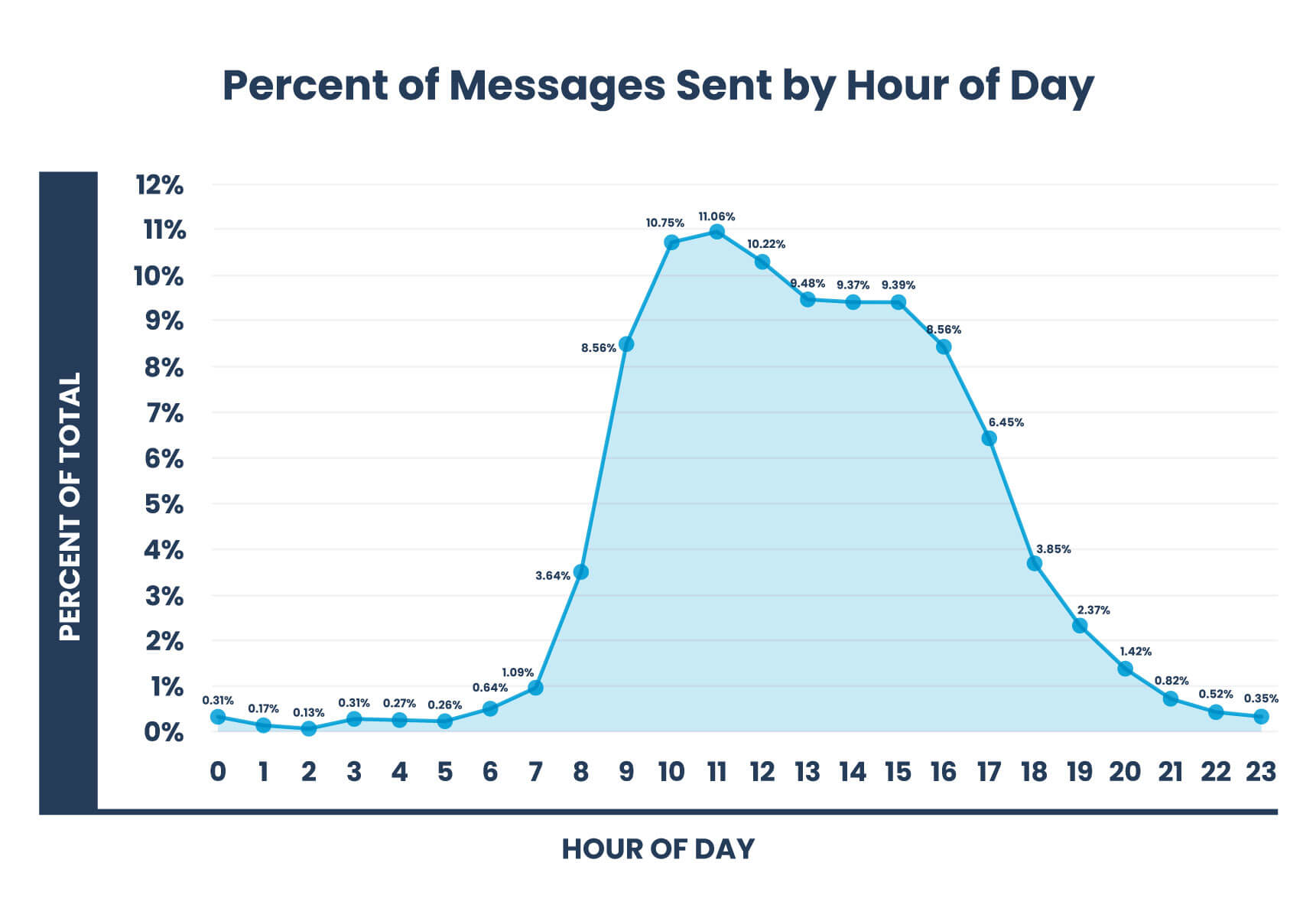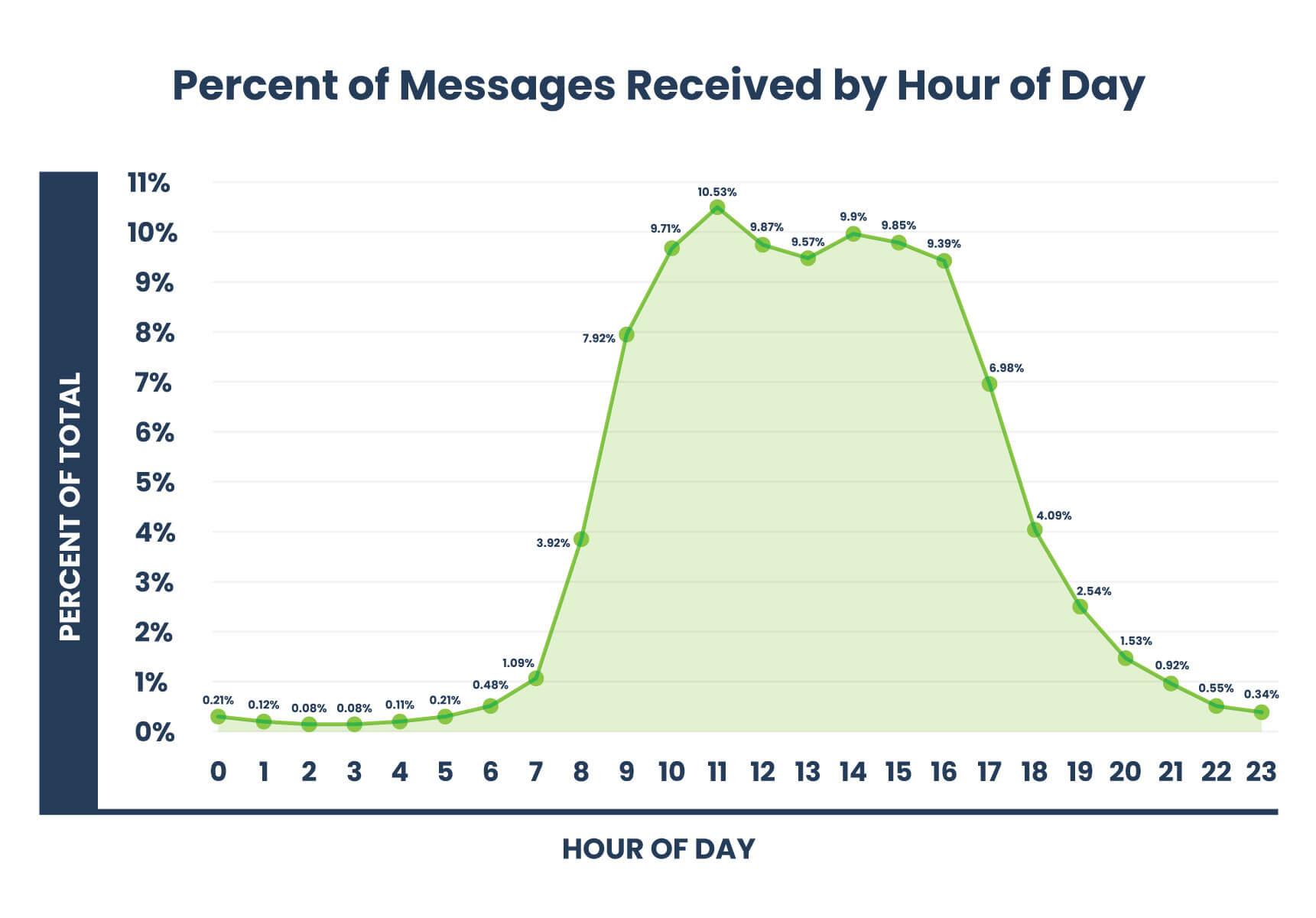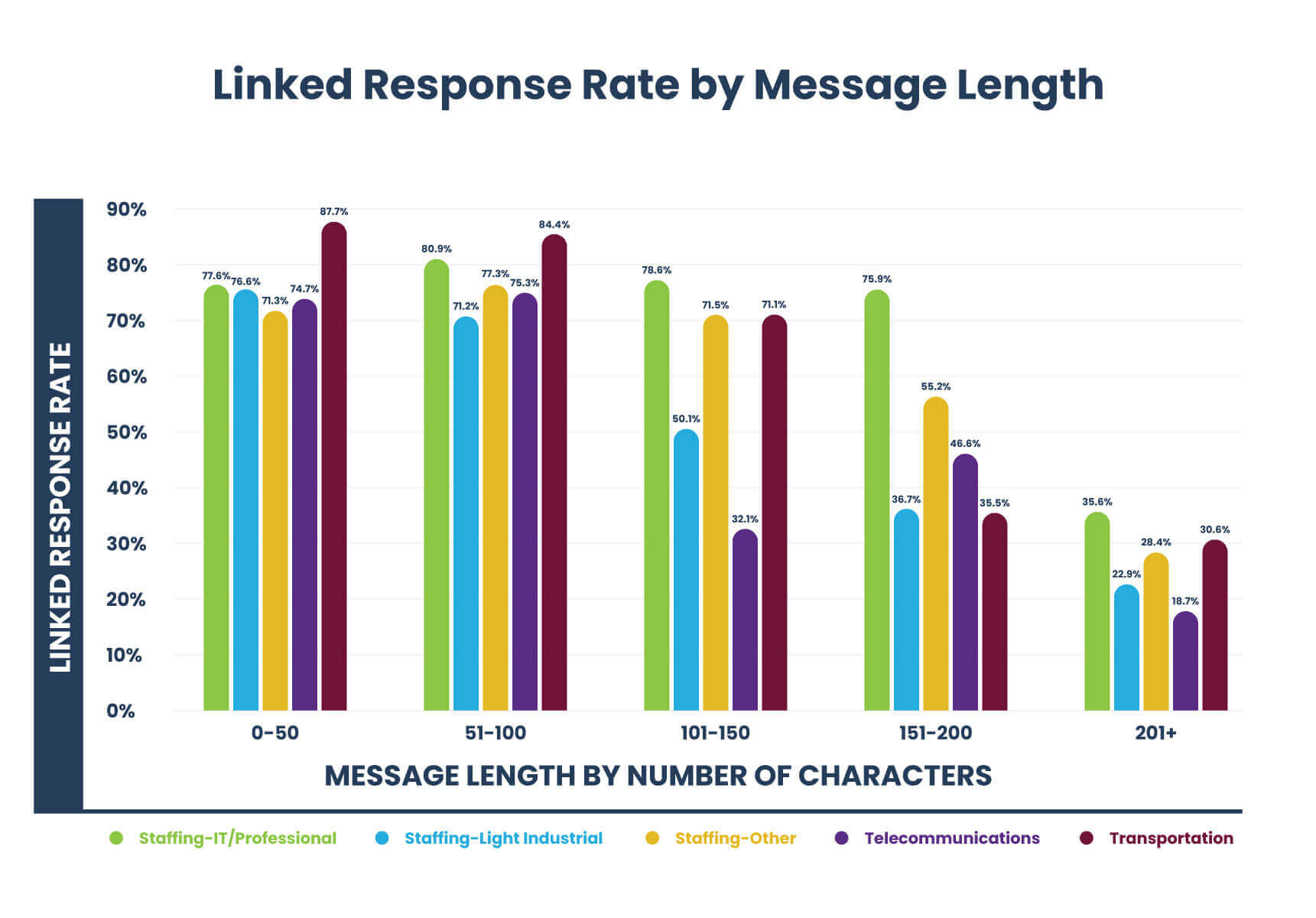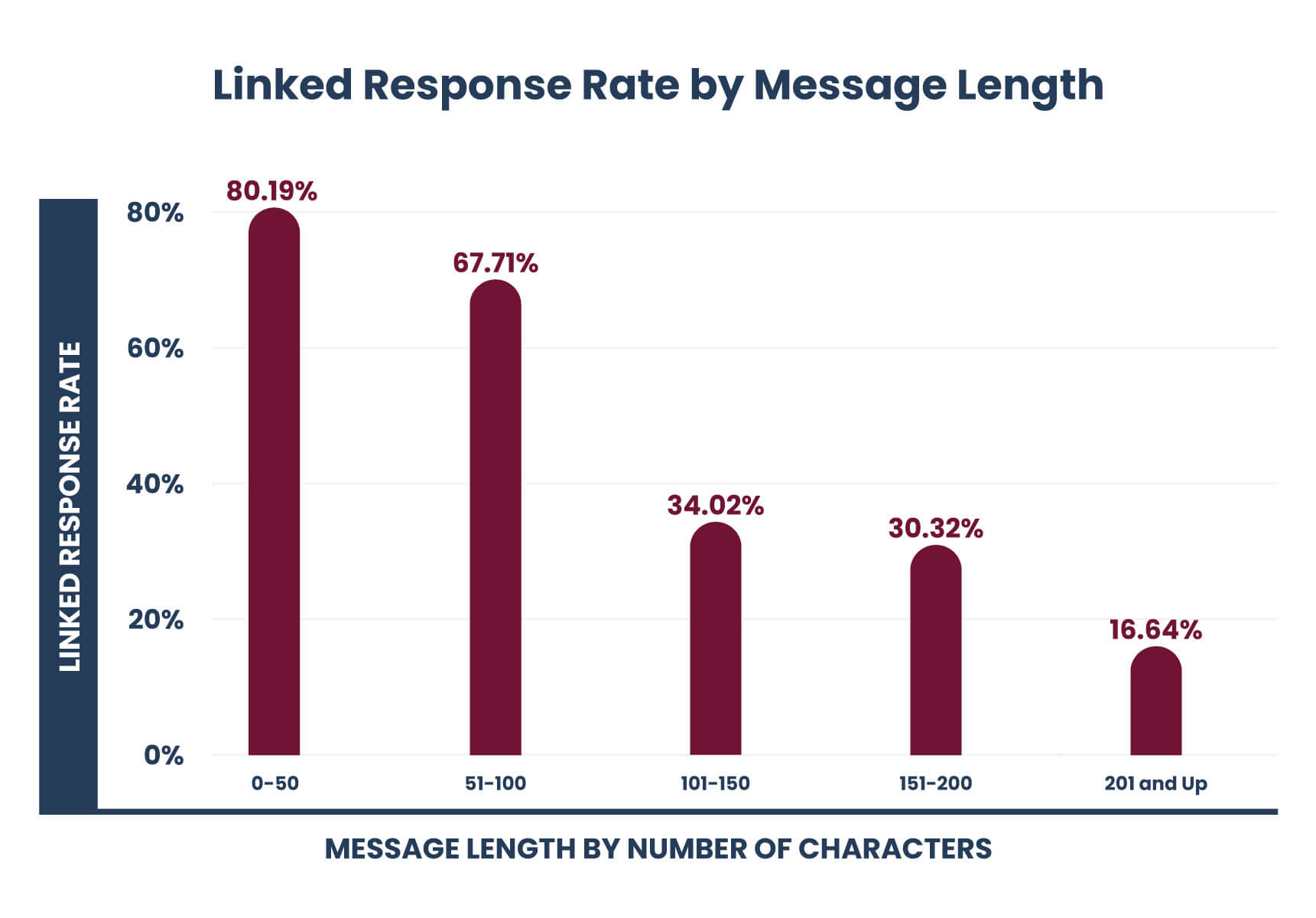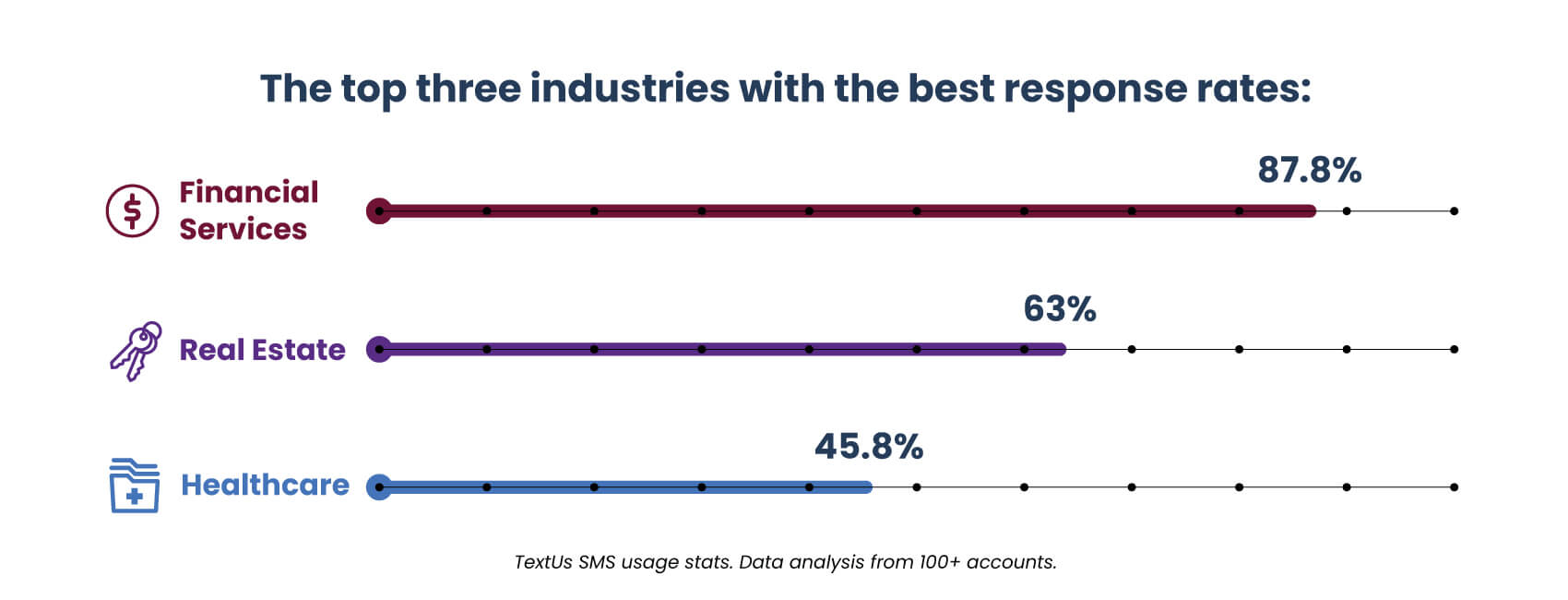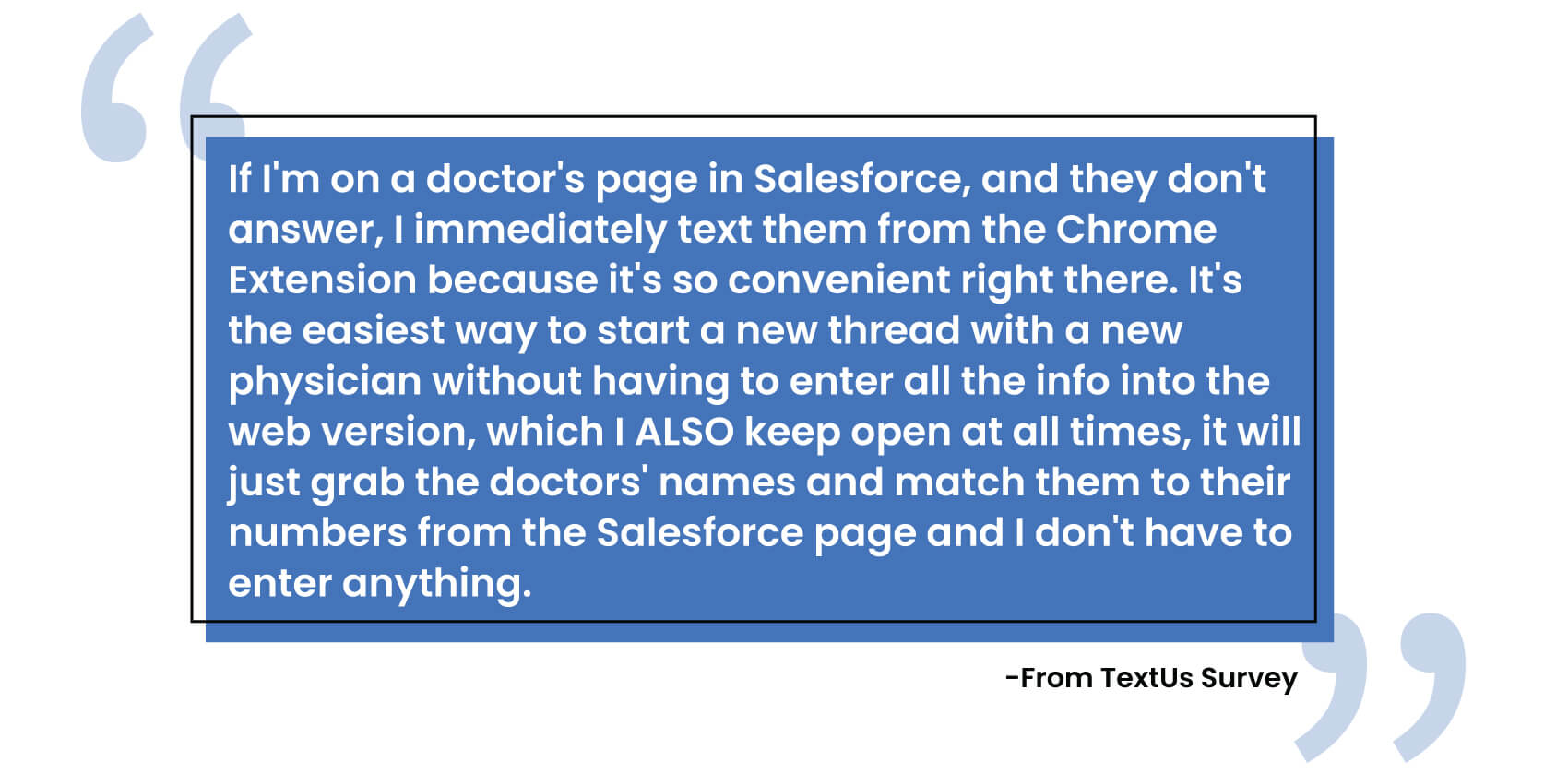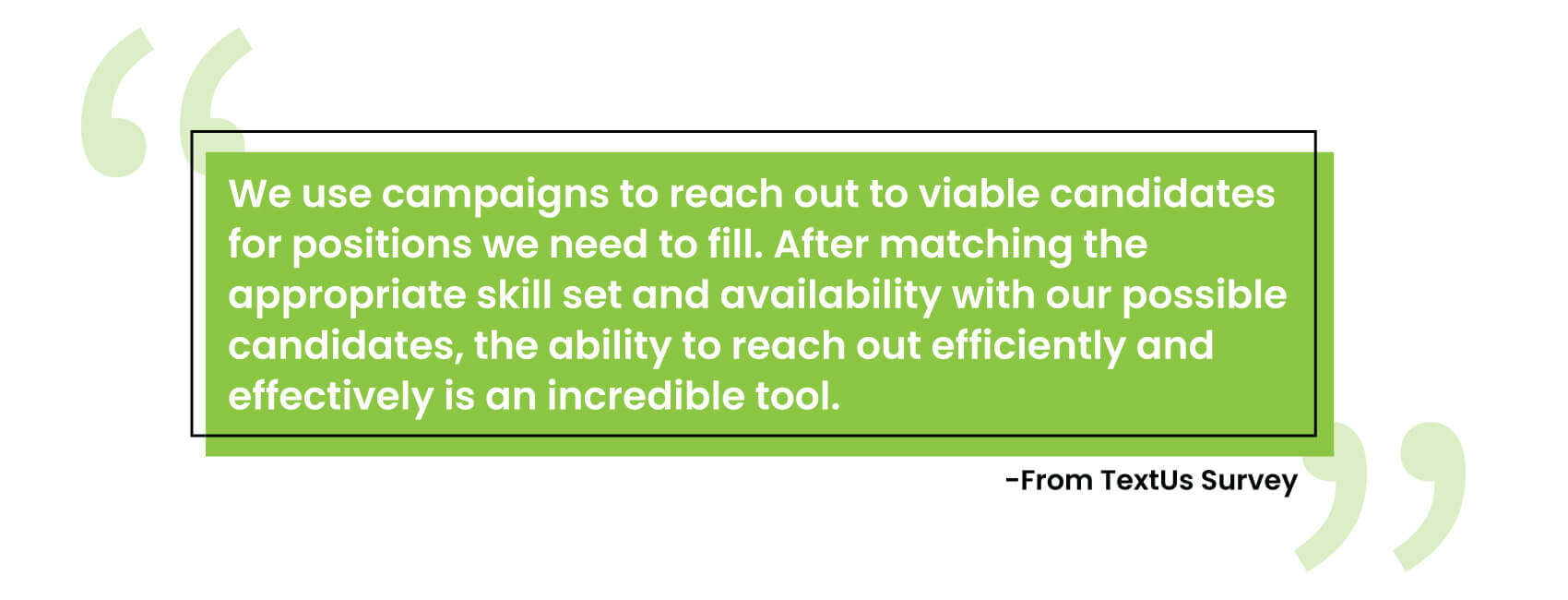Introduction: SMS Stats
Business Challenges in 2022
Technology continues to be a focus for companies looking to manage their business. With so many different interruptions to businesses including the economy and managing budgets, companies are looking for uninterrupted workflows that make their jobs easier. At a time when people are multitasking, finding ways to manage their time without adding extra burdens is appealing.
Technology that allows companies to interact with their customers, prospects, employees, and other stakeholders will be beneficial going into 2023. In order for technology to meet the needs of users, the user experience must be positive. The goal of technology is to improve the lives of its users, not make training or learning the product more difficult or add extra time. Users still want and expect speed and convenience in their lives and technology should accomplish that.
In our report last year, we predicted that users would want uninterrupted workflows, better user experience, and speed and convenience. We have seen those continue to be important solutions for businesses. We also have continued to see an increase in demand for texting and how businesses are using text to communicate with their employees, candidates, prospects, and customers.
We once again dug into our data as well as a survey to our customers to better understand how texting can provide a communications solution when companies are facing constraints, and to bring you the top texting statistics.
TextUs SMS Stats and Our Methodology
TextUs users are employed in a variety of sectors including: staffing, healthcare, HR, sales, higher education, K-12 education, real estate, transportation, managed and financial services, and SaaS. While the majority of our customers have more than 150 employees, we also have small business customers and mid-sized firms that use business texting.
We surveyed over 100 of our current customers in the above mentioned industries and sizes to gather text stats on their SMS usage for their 2022 business strategies and forecast the state of texting for 2023. As a company that embraces user experience, we also looked into our UX process and learnings from customer feedback that we incorporate into our product and features.
For any additional information or clarification on these or other sms stats, please contact TextUs Marketing or text us at 303-442-3223

SMS Usage Statistics
According to Beyond Market Insights, the application-to-person (A2P) SMS messaging market is anticipated to grow from 62.2B in 2021 to 89.2B by 2030, increasing at a compound annual growth rate (CAGR) of 4.1% from 2022 to 2030.
The study found that most businesses in almost all sectors were using text messaging to expand their customer relationship management.
The cost effectiveness and higher throughput is driving those numbers to make business texting a top solution.
Our survey shows the top two reasons customers use TextUs are getting in touch with prospects, leads, or new business, and communicating with current clients or employees—over half of our users say internal communications is the top reason.
More than half of our customers say that texting is their most effective channel of communication for their business.
Email and phone, even when combined, have lower percentages of success. While many of our users implement a mix of email, phone, and texting, they say text messaging has the best response. It’s no surprise that 62% of our customers are using TextUs multiple times a day!
Our top two CRM/ATS solutions customers use are Salesforce and Bullhorn. While our customers use a variety of different solutions for customer relationships or applicant tracking (more than 10!), our partnerships and integrations make it easier for customers to connect with their contacts, see real-time messages, and collaborate with colleagues. This year we added more integrations, including Microsoft Dynamics, to keep customers working seamlessly.
Integrations make workflows uninterrupted and we see that the most popular way users send text messages is in our web app. Our web app has an intuitive design to make ease of use a top priority and feature for our users. It closely resembles a standard inbox structure, similar to most email inboxes, to allow users to quickly adapt to a familiar experience with little to no learning curve.
The top three most useful features include the Chrome extension, the mobile app, and recurring campaigns. The Chrome extension makes user workflows even more efficient with a non-invasive slideout over top of their CRM or ATS allowing them to text right from the sidebar with the contact record of their current CRM/ATS. The mobile app is perfect for users on-the-go. No matter what your role within a company, a text messaging platform can fit whether you’re at a desk all day or on your feet and everyone can collaborate. Recurring campaigns lets users schedule their text messages and send at a time when it’s convenient for both the sender and receiver!
SMS Open Rate Statistics
In our survey, users prefer text as their main form of communication citing it was the most effective. When combined, email and phone were still rated lower in effectiveness compared to text.
With a 98% average read rate, text stats reveal many benefits to using the tool. When we look at our overall SMS usage statistics with our platform, we see growth. During 2022, we saw ~188M text messages sent.
We look at both conversational, 1:1 text messages and campaigns to multiple recipients in our SMS stats. We have seen expansive growth in particular for campaigns and automation this year. Last year, 55M campaign messages were sent and this year we have seen 62M. These messages also show strong response rates, with campaign messages averaging a 34% response rate and conversational (1:1) text messages averaging a 67% response rate.
Our SMS stats reveal a 48.5% average response rate.
Moreover, people are responding with a median response time of 11 minutes during the week compared to 90 minutes for email. We do see response times on Saturday and Sunday can jump up to 60 minutes. We expect companies to be texting more during the work week, but our users do appreciate the convenience of responding via the mobile app during the weekend when they are away from their desks. Our business texting statistics show that even on weekends, SMS response times are still faster than email.
The time of week and day is important for business texting statistics. We see the most text messages sent on Tuesdays and Wednesdays — around 10M each throughout the year. More than half of messages sent (~70%) happen between 9am-3pm. This suggests that midweek and earlier in the work day is the most popular.
We see a direct correlation between message length and response rate. When messages are under 100 characters, we see higher response rates. While this yields the best response rate discovered in our texting statistics, users continue to send messages with 100+ characters—with most text messages being over 250 characters.
Since we see people sending longer text messages, this may explain why our median response time is more geared towards 12 minutes. When the message length goes down, the response time is faster.
Looking at our industries with the best response rates, we discovered the top three performers were financial services (87.8%), real estate (63%), and healthcare (45%).
3 of Our Top 2023 Business Texting Predictions
1. Expanded Industry Usage
While the stats were not in the top usage for this year, we have seen new sectors enter the arena including transportation and sports. We think that as events come back and event management is moving to digital tickets, digital communication will also increase.
We have also seen an uptick in transportation including fleet and workforce management. We think that communicating deliveries and tracking in real-time will become more important as there have been more challenges in the logistics industry with supply and demand.
2. Automation
One of the greatest differences we saw in SMS usage statistics is the increase of our campaigns. Users are automating more of their text messages and creating contacts specifically to a certain campaign relevant to them. Automated sequences still provide customization and personalization to contacts that increase engagement.
As people take on more multitasking, we think that the ability to schedule cadences, contacts, and campaigns will become more important. The ability to send and optimize campaigns with more contacts will also increase. Large scale campaigns that save time while increasing deliverability and throughput will be important. Users want to reach larger audiences faster without sacrificing engagement.
3. Self-service and User Management
As adoption expands to more industries and across departments inside companies, we think users will want to automate and set up accounts more on their own. One reason adoption for SMS is growing is because it is a familiar tool for people.
Business texting looks and feels like how people use it for personal use, but with the business texting statistics growing, managers will want to easily add and remove users, automate account creation, and have notifications when accounts are created to get users up and running quickly.
Wrap Up
The explosive growth SMS has seen with more adoption, usage, and industries including it in their business communication strategy, we also see an increase in integrations to meet the needs of the different industries. We have seen close to 100 integrations with our customers. The fact that so many different industries are using and implementing text regardless of their integration speaks to the growth of the industry. As more integrations become available, we see that businesses want to incorporate text into their daily workflows to communicate more effectively and in a way that doesn’t disrupt their day.
The software landscape has changed because of this growth. There are now many more companies offering business texting software platforms, but they are not all created equally. The various feature sets and a company’s roadmap is a good indicator of finding the right SMS platform for you.
We learned that users want to target their audience whether they use 1:1 text messages or automated campaigns. As users learn how to personalize large campaign sends while including rich media such as photos, videos, or PDFs, they will be able to increase engagement while saving time.
We expect to see response rates increase — we saw an increase this year and expect it to improve next year. Understanding texting statistics including how users respond and what they click, will let users do more of what is successful and increase demand. We know that texts already have a greater chance of being seen and replied to than email or phone calls, but now users can track large campaign sends.
Looking at the top challenges businesses may face in 2023, we have already seen how texting has provided solutions. Our customers have been able to withstand labor shortages and economic downturns by recruiting via text, embracing the digital transformation with SMS marketing, and engaging with employees to increase internal communications.
